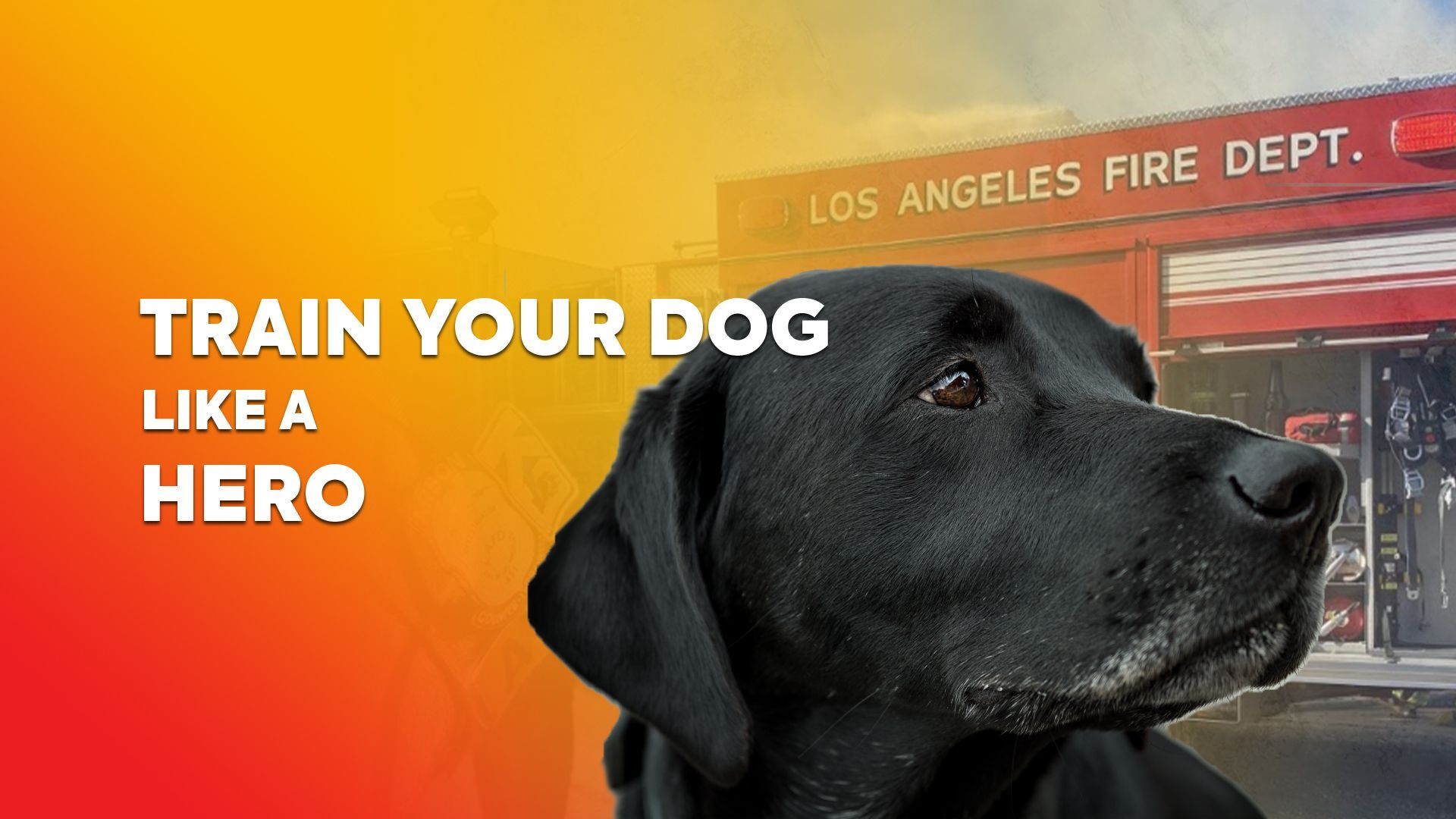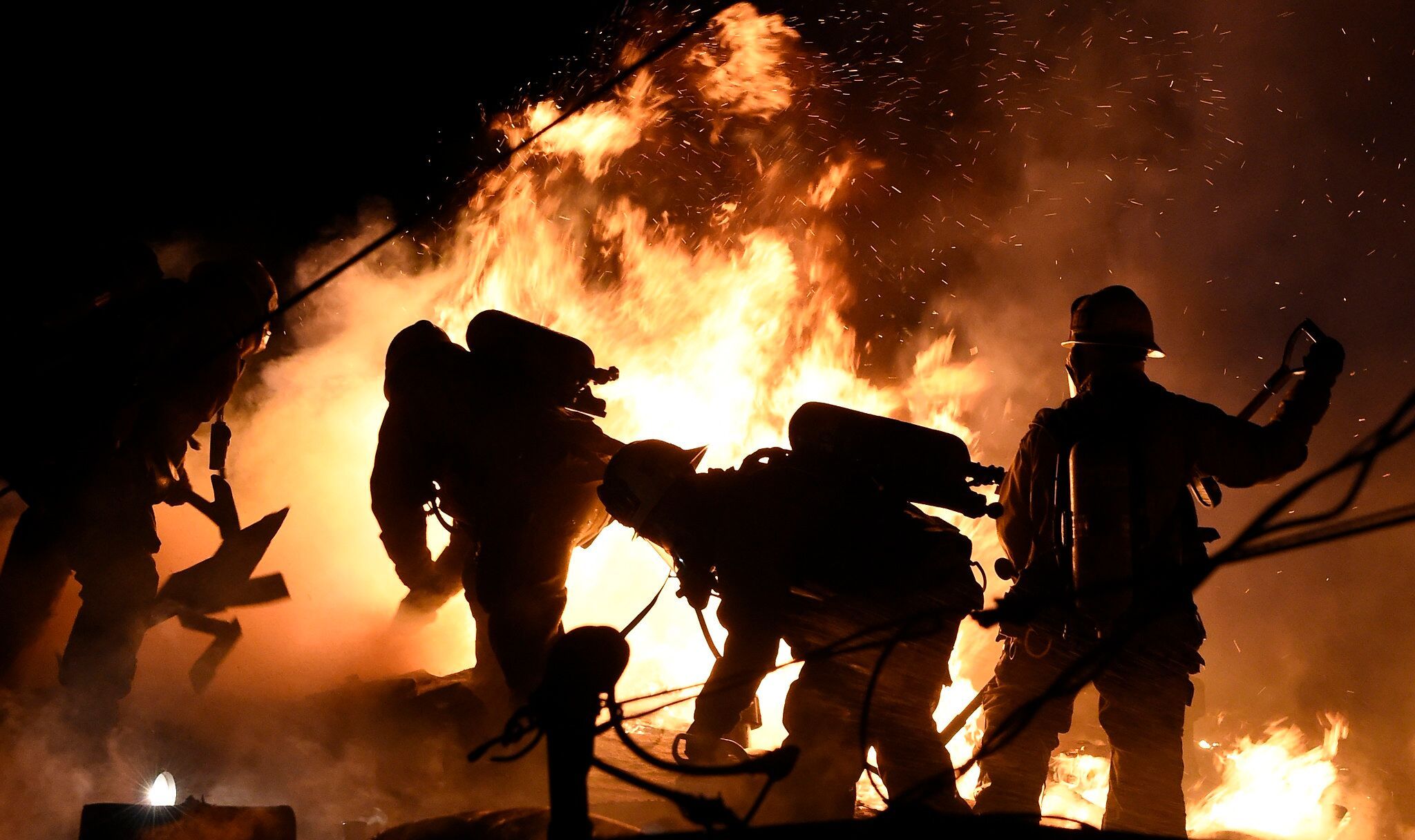
LAFD Arson has a new officer on the case, and she’s got a nose for trouble
Can you smell a drop of gasoline from across a football field? How about spot the source of a fire to within three inches? Can you tell the difference between Terpinolene and Kerosene measured in microns? Probably not, which is why the Accelerant Detection Canines of the Los Angeles Fire Department (LAFD) are here! A new ADC just joined the team…and she’s already working hard to keep the city safe.
The Los Angeles Fire Department and K9 Heroes
While the first US Arson dogs arrived around 1984, Los Angeles didn’t find the right team until a decade later. In 1995, Frank Oglesby became the first LAFD K9 Arson Investigator. Over the course of three and a half decades, Frank worked alongside Flower, Buster, and Major, and eventually the remarkable Blue. Now, as of 2023, the fifth ADC to ever join the LAFD has four incredibly large (metaphorically) shoes to fill.
Panthera hails from Spain, and she arrived in Los Angeles with stars in her eyes and a few Snausages in her carryon luggage. She quickly fell into step with her older partner Blue, but she’s still filled with boundless puppy energy. Most importantly, she was ready to work. In just the first few months of the year, she has already assisted on several calls, including a homicide investigation.
What is an ADC
Not to put too fine a point on it, but a dog can smell really well. We’ve known this as a species for…a few thousand years. But as far back as 600 BCE, our canine companions served alongside us to add their strengths to our own. Still, it wasn’t until recently that we’ve deployed these daring dogs specifically for their sleuthing snoots.
You’re probably familiar with the iconic image of a Dalmatian running alongside a fire carriage in the eighteenth century, or a handsome German Shepherd descending into a secured vault to obtain intel for the government (I believe it was in Mission: Impawsible). But trainers knew for years that some breeds could learn to support not only law enforcement, but search and rescue and arson investigations. Thus, in 1985, the Bureau of Alcohol, Tobacco, and Firearms (ATF) launched a pilot program to test canine candidates as accelerant detectors.
Nellie, the first ADC, knocked the competition out of the water. Until then, Arson units used complex instruments to investigate a scene. However, even these advanced tools had trouble distinguishing between accelerants (what was used to start the fire) and products of pyrolysis (similar chemicals and gasses present at fire scenes). Nellie, however, had an olfactory system capable of detecting trace chemicals at a value of parts per quadrillion!
For context, that’s like you being able to taste a single drop of Tabasco sauce…in the Pacific Ocean.
Accelerant Detection Canines are able to distinguish between a wide variety of chemicals. They train multiple times per day to improve and retain their skill at locating gasoline, petroleum distillates, naphthenic products, and Isoparaffinic products…just to name a few! In simpler terms, they are able to tell if a fire started because someone accidentally dropped an “Obscenely Expensive Coffee” scented candle versus someone pouring lighter fluid over their carpet.
When an ADC “marks” on a spot, investigators dig out the area and run a detailed analysis. Samples identified by canines have a far higher probability of confirmation than those just found with conventional equipment. This means reduced hours at the scene, fewer samples collected, a lighter load for lab personnel, and a faster turnaround of evidence.
ADCs help Arson investigators determine what actually happened at a fire scene, which is invaluable in preventing future fires and correctly identifying evidence of an intentional blaze.
How to Train (and Eat) Like a Champion Dog
Of course, working as a member of the LAFD isn’t easy. Like her peers, Panthera has to train daily to stay current on her tasks, and she needs to maintain certain health standards to fit into the ATF’s rigid criteria. This isn’t a job that just any dog can stumble into.
Like most ADCs, Panthera is a pure-bred Labrador Retriever. The breed is known for loyalty, the desire to work hard and learn, and a softer temperament than some other working dogs. Her training—and diet—is highly regulated by the department. She must maintain a strict weight, and is regularly tested on accuracy in detecting certain chemicals.
Panthera also sticks to a strict vitamin regiment:
These, alongside a few other treats, keep Panthera in tip-top shape every day. After all, she and her handler are on call 24/7. And, since Panthera is part of the ATF National Response Team (and K-9 Arson Investigator Gaeta is a Federal Task Force Officer), she can be sent anywhere in the United States to assist in an investigation.
Panthera is the fifth in a line of heroic hounds that have been serving this city for nearly thirty years. Her service has helped save lives, solve cases, and prevent future fires.
Does your dog have what it takes to be a hero?
If your four-legged friend has the makings of a genuine animal ambassador, this is your chance to launch them into stardom. Submit your photo for Howling Heroes and tell us why your furry family member is a real hero. Then encourage your friends, families, and even strangers to vote. The top ten finalists then go before our panel of judges (including Fire Chief Kristin Crowley) to select the 1st, 2nd, and 3rd place winners.
The funds from this campaign go on to support the LAFD by acquiring essential equipment and initiatives, such as the LAFD’s Canine Therapy Program.
The contest is open from April 12 to April 26, 2023.


















